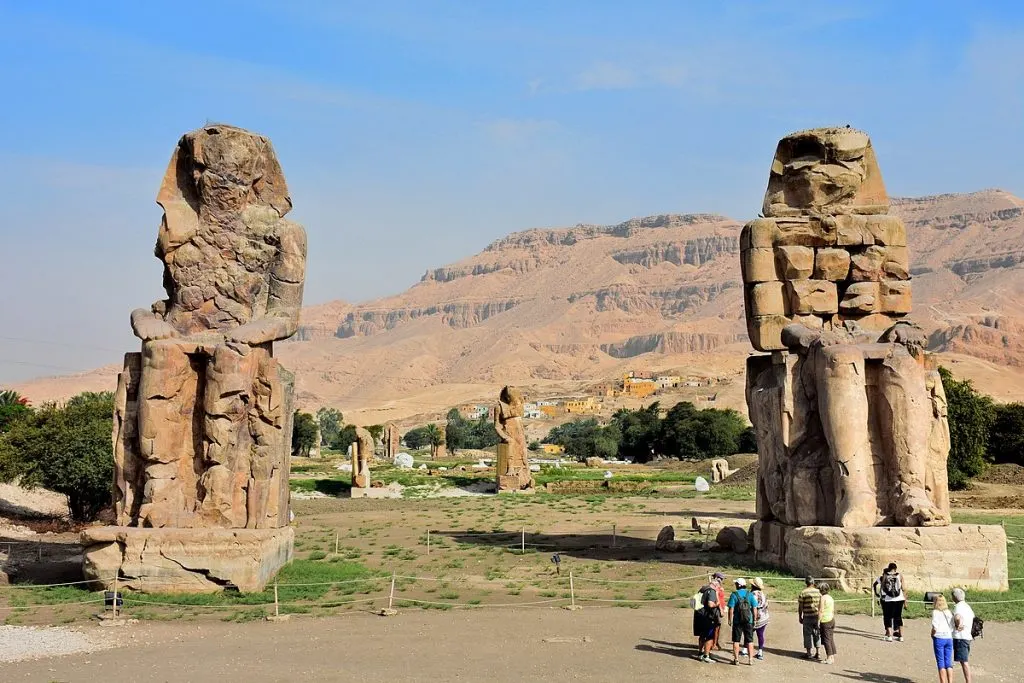Some of the most fascinating statues built in Ancient Egypt can be found on the West Bank of the River Nile.
In this post, you’ll discover the ultimate list of interesting Colossi of Memnon facts.
1. The statues are named after a hero of the Trojan War in Greek mythology
The Colossi of Memnon were named after a Greek hero of the Trojan War in Greek mythology known as Memnon. This name was given by the Romans, even though they depict a pharaoh of the 18th dynasty named Amenhotep III.
He was also a King of Ethiopia with fighting skills almost equal to the legendary warrior Achilles. The statues were given his name because various colossal statues had been built in his name already.

2. They are located in the Theban Necropolis
These two massive statues are located on the West Bank of the River Nile, in a massive Ancient Egyptian complex known as the Theban Necropolis. This complex is located across the modern-day city of Luxor and was referred to as the “Memnonium” in Roman times because of the large statues and Temple of Memnon that was located here.
Other famous landmarks and historical sites in the Theban Necropolis are the Valley of the Kings, which features the tomb of legendary Pharaoh Tutankhamun, the Valley of the Queens, and the huge Temple of Hatshepsut.

3. They were built during the 18th Dynasty
The two colossal statues were constructed during the 18th dynasty which ruled over Ancient Egypt between 1550 and 1292 B.C. They were built during the reign of Pharaoh Amenhotep III, the Ninth Pharaoh of this dynasty.
This Pharaoh is also known as “Amenhotep the Magnificent,” mainly because his reign is considered to be the ultimate highlight of Ancient Egypt in terms of prosperity and artistic endeavors.

4. The statues are all that remains of the huge temple they were guarding
The amazing rule of the Pharaoh and the wealth it brought to the Kingdom resulted in massive construction projects. If the colossal statues are an indication of the massive scale of the Temple of Memnon they were guarding, then we can only imagine how big the temple he built in his own honor really was. It’s estimated that it covered an area of about 35 hectares (86 acres).
It’s assumed that the Temple of Amenhotep was the largest temple ever built in Ancient Egypt, making the huge Temple complex at Karnak even pale in comparison. And that means something if you ever saw the massive rows of enormous columns and statues there.
One of the most remarkable Colossi of Memnon facts is that not much remains of his massive temple. That’s mainly because of severe earthquakes, which flattened everything but the huge statues at the entrance gate.
The area in which the temple was located is also prone to flooding. This destroyed its foundations which made it much easier for future rulers to use the temple as a quarry site for their own projects.
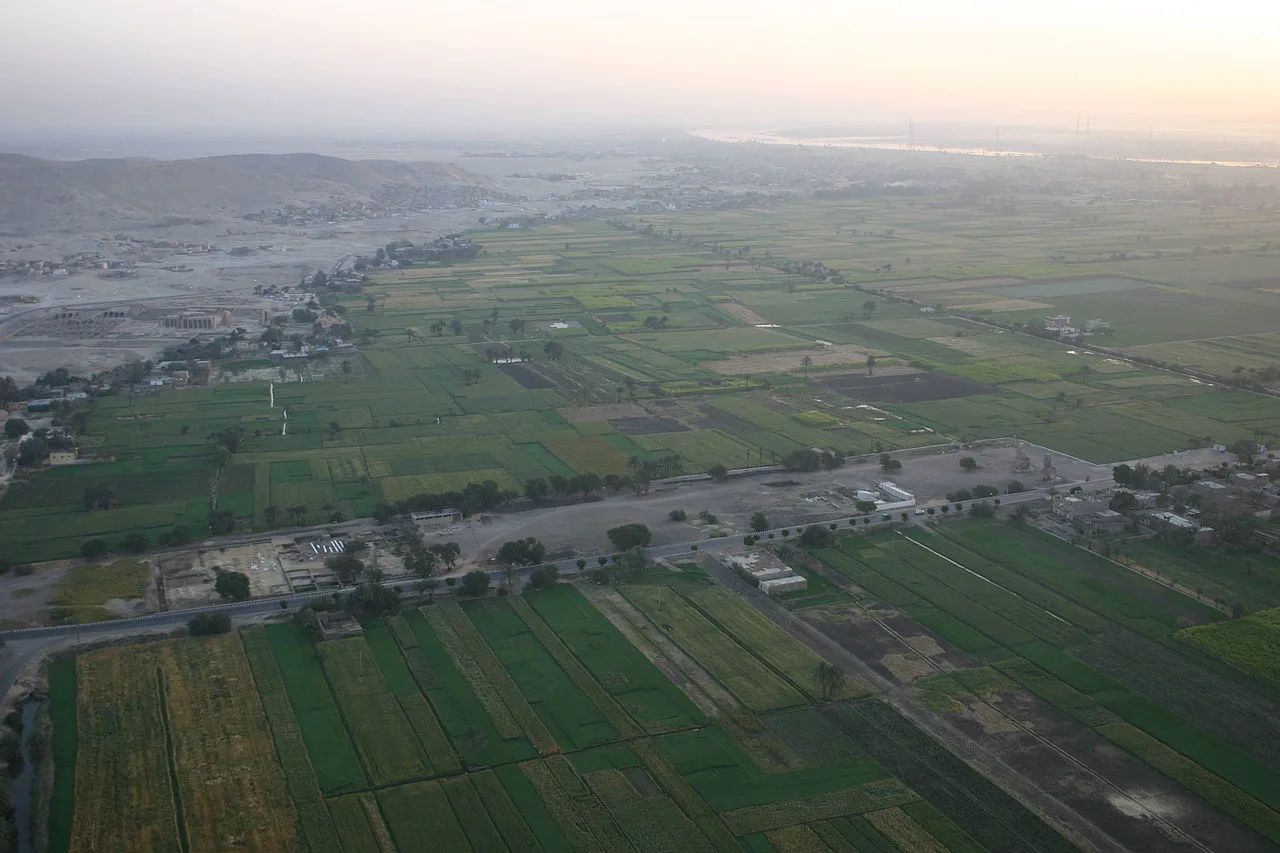
5. Both statues originally depicted the same pharaoh
It’s believed that both statues were used to depict Amenhotep III in all his glory. His hands are resting on his knees and he is looking straight toward the Nile River.
Because of the earthquakes, just about all the details above the waist have been destroyed, making it impossible to see the face of the Pharaoh and other details that might reveal who was really intended to be eternalized.
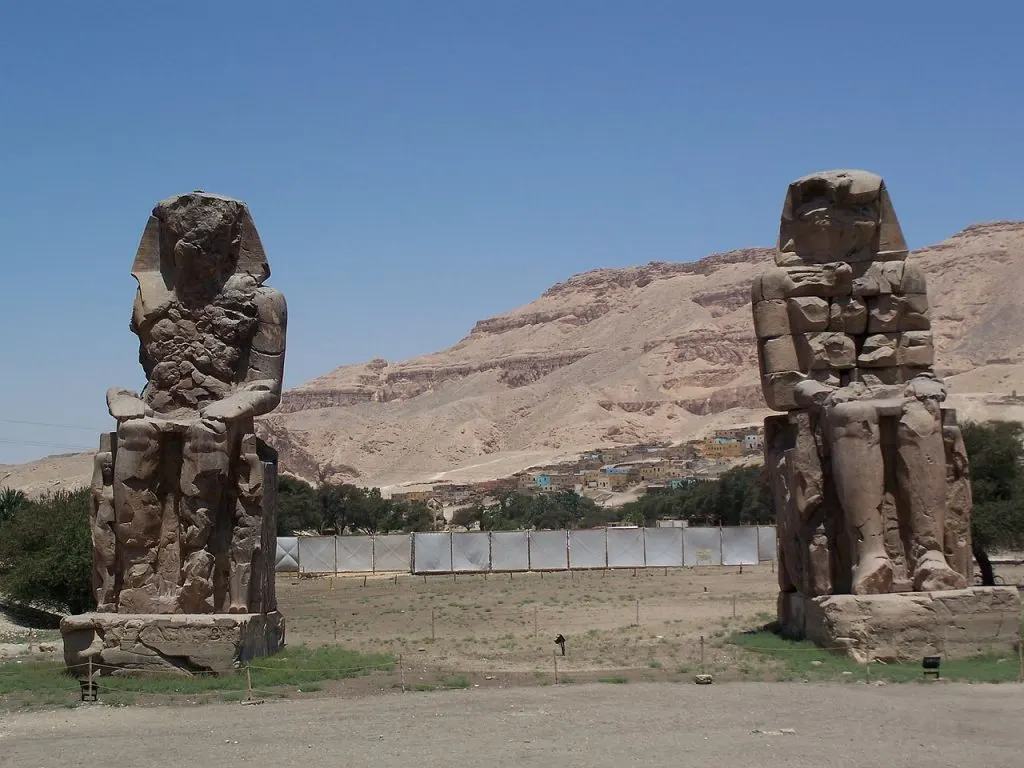
6. The pharaoh’s mother and wife are also depicted
It’s clear that Amenhotep the Magnificent wasn’t a humble man. If you look closely, though, you can see two other figures emerging next to the throne he is sitting on the side of the relief panels.
These two statues are believed to have been the Great Royal Wife of the Pharaoh named Tiye, and his mother as well, who was called Mutemwiya.
The relief panels glorify the Nile god Hapi. One of the most incredible Colossi of Memnon facts is that this god was one of the causes that the mortuary Temple of Amenhotep was eventually destroyed because it was located right in the floodplain of the river.
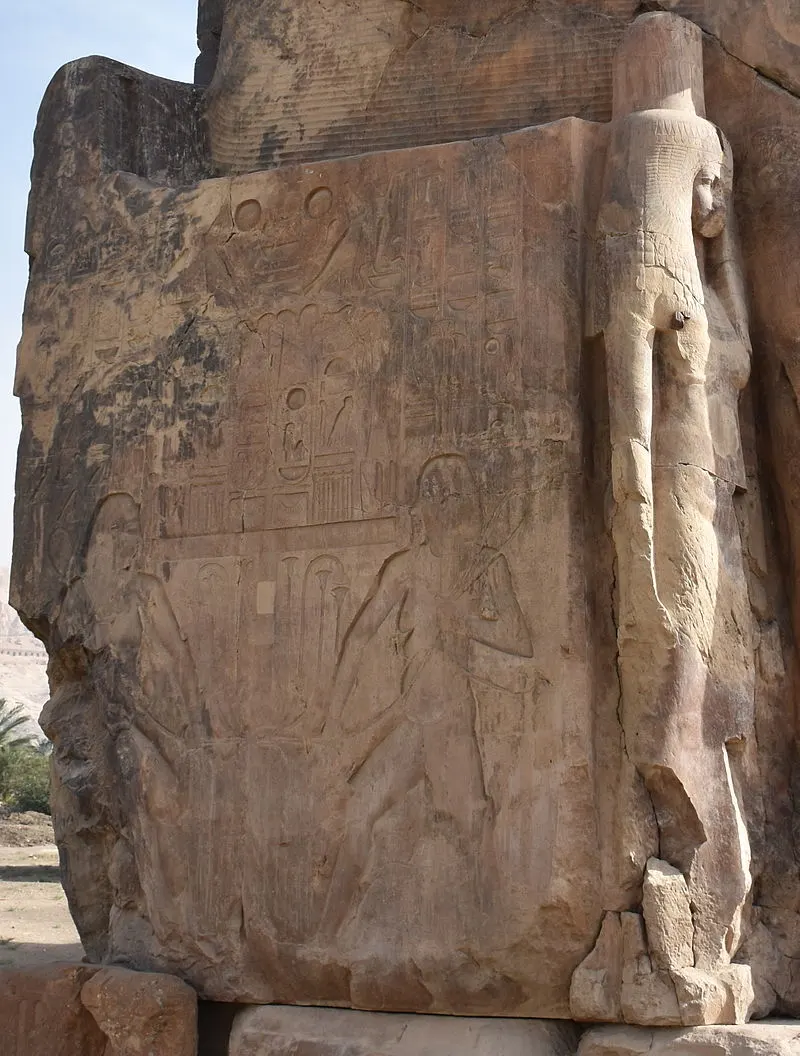
7. The stones to build the statues were transported over a huge distance
One of the most amazing Colossi of Memnon facts is that the stones used to build the massive statues weren’t extracted from a local quarry. A study has shown that the only place that the huge quartzite sandstone could have been quarried was at el-Gabal el-Ahmar, located 675 kilometers (420 miles) to the north near modern-day Cairo.
To make this story even more astounding, these blocks weighed way too much to be transported upstream the River Nile. This means that it’s pretty certain that they were transported overland as well, which must have been a massive undertaking at the time without modern equipment!
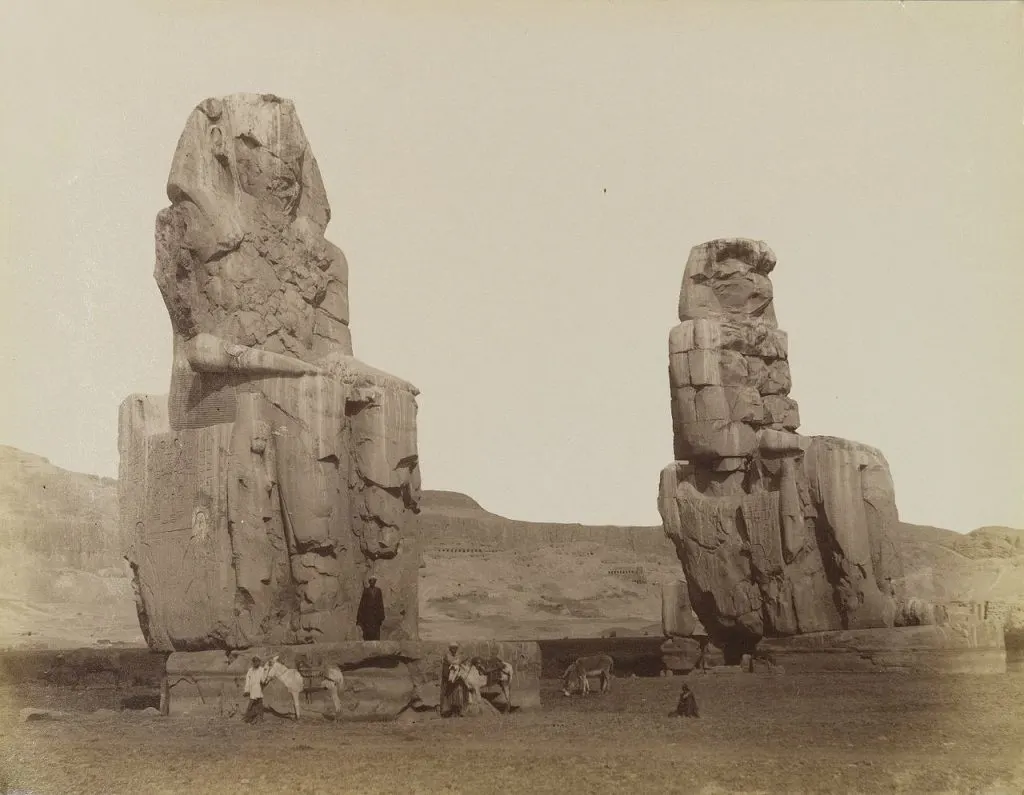
8. The weight of the Colossi of Memnon is enormous
So how big are the Colossi of Memnon really?
It’s estimated that both statues weigh about 720 tonnes each, which is 720,000 kilos. They also stand 18 meters (60 feet) tall, including the 4 meters (13 feet) pedestal that they were placed on.
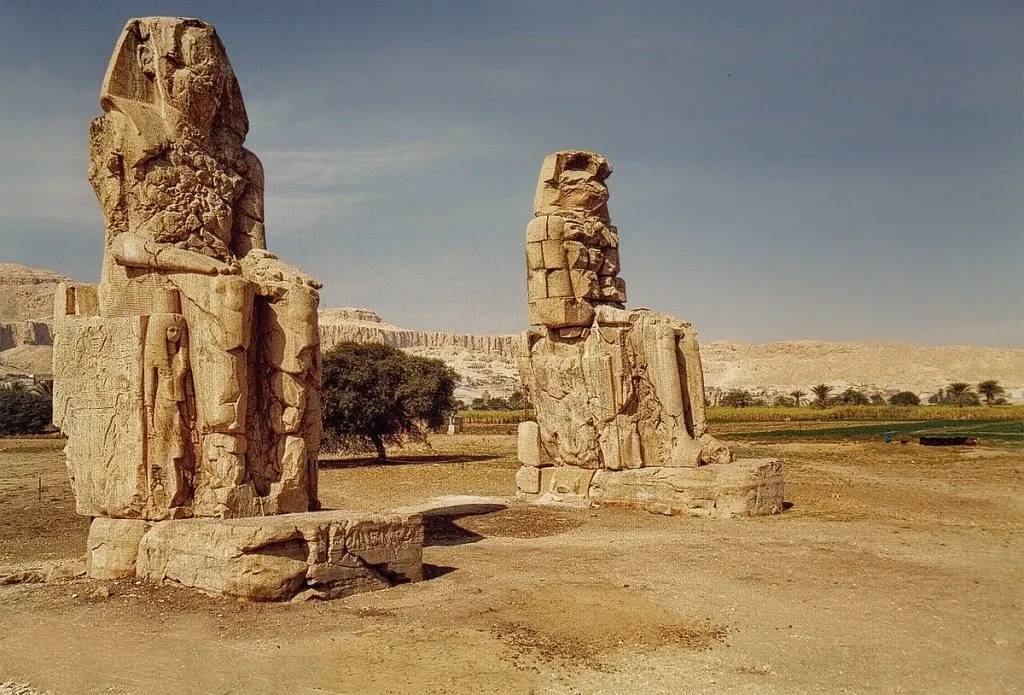
9. The north statue has been reconstructed by the Romans
One of the most fascinating Colossi of Memnon facts is that both statues aren’t identical anymore. The southern statue consists of just 1 solid block of granite, while the northern one consists of 5 tiers of stones.
It’s believed that a massive earthquake around 27 B.C. destroyed much of the northern statue and that it has been reconstructed by a Roman Emperor, presumably Septimius Severus who ruled between 193 and 211 A.D.
The reconstruction wasn’t done with stones quarried in Cairo, though, but with sandstone quarried at Edfu just north of Aswan, just 50 kilometers (30 miles) to the south of the Theban Necropolis.
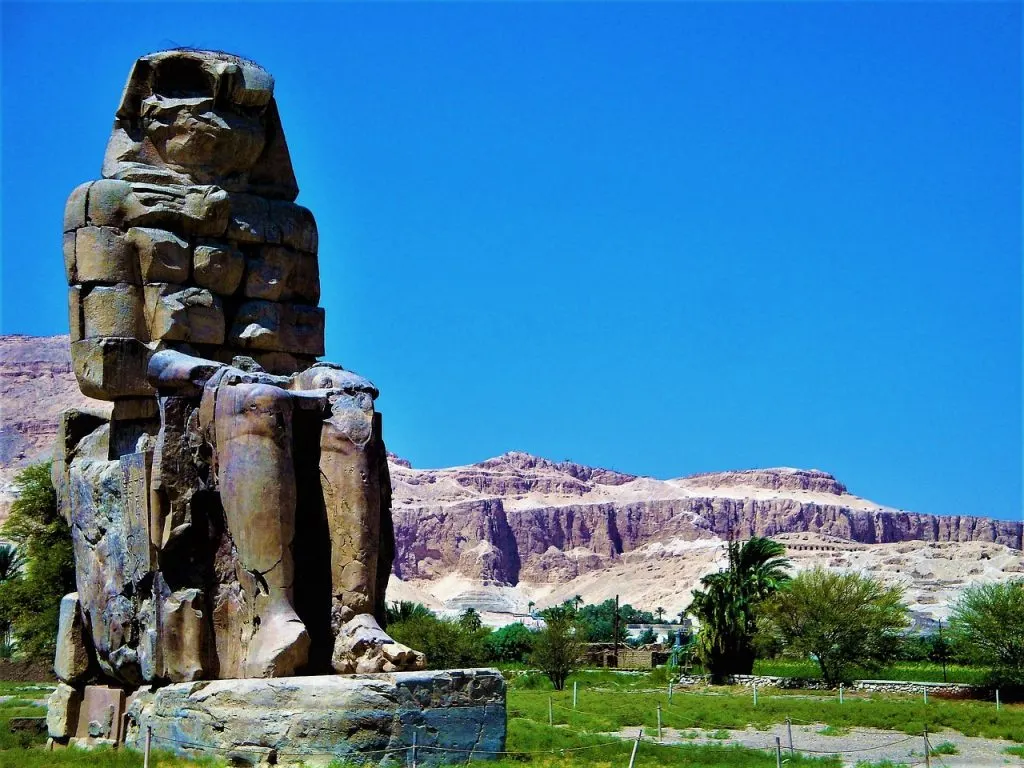
10. The northern statue was heard singing multiple times in ancient times
There’s a legend surrounding the northern statue which has been noted by numerous classical historians, including Strabo, Pliny, and Tacitus. Their stories mention a peculiar sound coming from the northern statue which reportedly sounded “like a blow.” Other sources claimed it sounded like “the string of a lyre breaking.”
The legend of the “Singing Memnon” was last reported in the year 196 A.D., which means there must have been some natural cause for it. This theory is made strong because that was around the time that the reconstruction took place.
So why did the Colossi of Memnon sing?
Most probably because of the evaporating dew caused by rising temperatures in the morning. Once the additional weight was added to the partially destroyed statue during its reconstruction, the sounds suddenly stopped!
